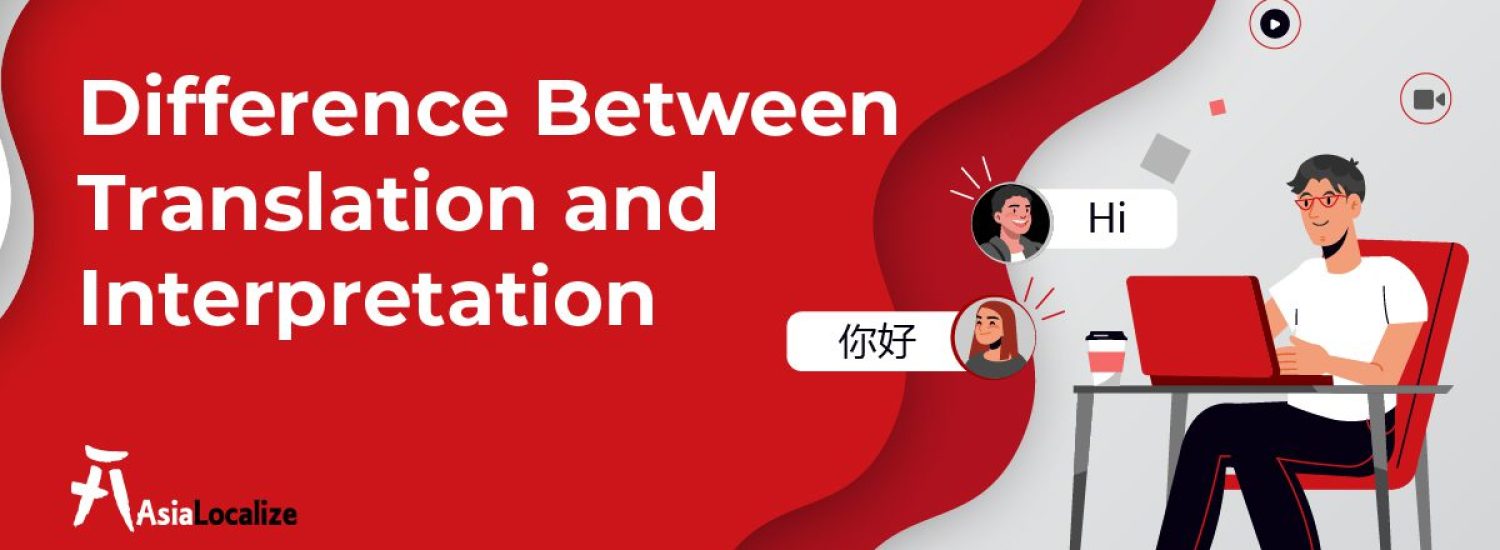Businesses are losing a staggering $6.25 million per year due to a lack of effective communication, according to research conducted by Grammarly and Harris Poll. Language differences represent a major source of miscommunication that hinders productivity and performance.
With globalization connecting the world, overcoming language barriers has become really important. Whether communicating across regions, dealing with international clients or partners, or serving multilingual communities, the demand for language solutions like translation and interpretation in business has never been greater.
Both translation and interpretation serve a common goal – breaking the language barriers, conveying messages and meanings across different cultures and languages. They have the same purpose, yet they are two different practices that require a distinct level of expertise and set of skills.
In this post, we will understand the difference between translation and interpretation, assisting you in choosing the exemplary language service for your business.
What is Translation?
Translation is the conversion of the written text from one language to another, taking into consideration the target culture and the unique way of communicating with the target audience.
It’s how to transfer the meaning of a source language text to a target language text to seem natural for the receiving end.
There are different types of translation to meet a variety of needs. Translation work encompasses general translation as well as specialized fields like legal, medical or software localization. It also includes translating literature, documents, websites, and more.

Skills of a Professional Translator
The role of a professional translator doesn’t only involve conveying the written words but also capturing the nuances, idiomatic expressions, and cultural references inherent in the original text.
In addition, they should maintain the original text’s style, tone, and form while keeping in mind the nature of the subject matter in place and its unique terminology and essence.
That’s why a professional translator requires an array of important skills and abilities. Mainly, extensive language proficiency in both the source and target languages is necessary to convey intended meanings accurately.
Cultural awareness and strong writing skills are also crucial to producing culturally aware and error-free content that sounds natural in the target language. With such a diversity of fundamental competencies, the translator becomes well-equipped to efficiently handle various projects to a high standard.

What is Interpretation?
Interpretation is the oral translation of spoken language in real-time. Interpreters don’t only convey spoken words and meanings from one language to another but also ensure the tone is accurately communicated to the audience.
When interpreting, professionals must relay the intended message without altering its meaning, while maintaining fluency of expression to allow conversations to flow seamlessly. Interpreters demonstrate cultural sensitivity to properly convey subtle yet important cultural implications embedded within a speaker’s words.
Interpretation typically involves two main types: on-site interpretation and remote interpretation.
- On-site interpretation entails the interpreter being physically present with those requiring translation services.
- Meanwhile, remote interpretation allows for translation from afar, occurring either over the phone or through video technology.
Here are the three modes of interpretation:
- Simultaneous Interpreting: While the speaker is talking, the interpreter renders the message in the target language. (Usually used in conferences and large events)
- Consecutive Interpreting: The interpreter speaks after the original speaker has finished a sentence or a complete thought. (Commonly used in meetings, negotiations, and smaller group settings)
- Whispered Interpreting (Aka chuchotage): The interpreter whispers the translation to the listener while the speaker is speaking. (Commonly used in small group settings without the need for specialized equipment)

Skills of a Professional Interpreter Must Have
Professional interpreters require a diverse yet critical set of abilities to excel in their work. For interpreters to ensure seamless two-way communication, they should be fluent in both languages in question and well aware of both speakers’ cultures. They should also be active listeners and have the ability to process information quickly and accurately.
On top of that, they should be able to communicate in different speaking styles and accents and understand how to choose the right word for the intended meaning. They also should be competent to utilize technology tools, especially for simultaneous interpretation.
And perhaps most importantly, interpreters must perform with precision even under pressing time constraints or stressful settings.

5 Key difference between translation and interpretation
- Medium
While interpreting means translating a speaker’s speech orally in real time, translation conveys meaning in written form from one language to another.
- Delivery time
A translator has time to find, choose, and use the right keywords and even to review their translations before delivery. However, an interpreter has a one-time shot to convey the meaning from one language to another.
- Accuracy
Urgency is at the heart of interpretation services! That’s why it’s very challenging for an interpreter to achieve the same level of accuracy that a translator can accomplish.
- Tools and resources
Remote interpreters, for example, should be equipped with a robust video conferencing system in order to conduct a successful session. On the other hand, translators utilize advanced technologies, such as translation memories and terminology management, to accelerate time to market and improve consistency.
- Non-verbal communication
Interpreters must be highly attuned to non-verbal cues, including body language and tone of voice since they play a crucial role in accurately conveying a message. Aside from the spoken words, interpreters express the tone, emotions, and nuances of the speaker.
Do you want help in selecting the right language services for your business? We at AsiaLocalize provide our clients with end-to-end solutions customized to their needs and aligned with their target audience’s expectations.






